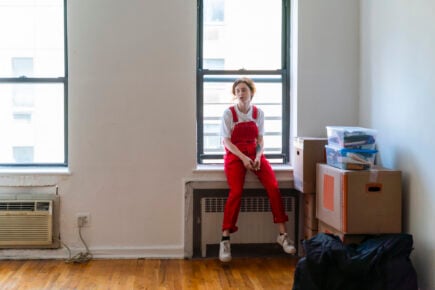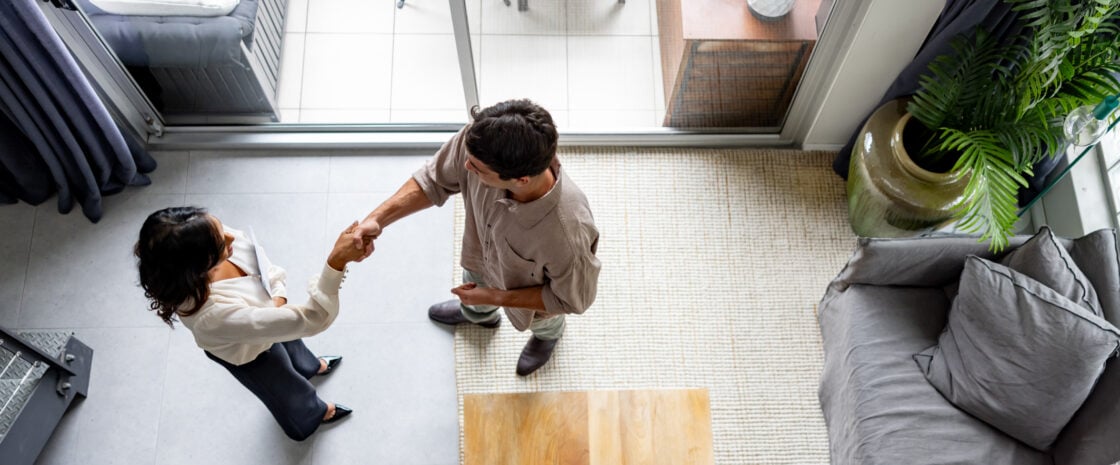Rental yield measures the profit potential of an investment property by expressing annual rental income as a percentage of the property’s value.
It is typically calculated in two ways:
- Gross rental yield: Calculates rental income as a percentage of the property’s market value or purchase price, without factoring in ownership costs.
- Net rental yield: Accounts for expenses such as maintenance, management fees, insurance, and property taxes, providing a more accurate measure of profitability.
How to work out gross rental yield
Gross rental yield is a straightforward calculation that helps investors assess the potential return on a property before factoring in expenses.
Gross Rental Yield Formula:
Gross Rental Yield = (Annual Rental Income ÷ Property Value ) × 100
Example calculation:
- Property purchase price: $500,000
- Weekly rent: $500
- Annual rental income: $500 × 52 = $26,000
Now, applying the formula:
- Gross Rental Yield = (26,000 ÷ 500,000) × 100
- Gross Rental Yield = 5.2%
A 5.2% gross rental yield indicates that the annual rental income equals 5.2% of the property’s purchase price.
For every $100,000 spent on purchasing the property, an investor could expect to earn $5,200 in rental income per year. This helps assess potential returns before accounting for ownership costs such as maintenance, insurance, and property management.
How to work out net rental yield
Net rental yield provides a more accurate measure of profitability by factoring in the ongoing costs of property ownership. These costs may include:
- Home and contents Insurance
- Strata fees
- Vacancy costs
- Repair costs
- Legal fees
- Building inspection fees
- Maintenance fees
- Agent fees.
Once you calculate these costs, you can use the following formula to determine the net rental yield.
Net Rental Yield Formula:
Net Rental Yield = ((Annual Rental Income − Annual Expenses) ÷ Property Value) × 100
Example calculation:
- Property purchase price: $500,000
- Weekly rent: $500
- Annual rental income: $500 × 52 = $26,000
- Annual expenses: $4,000
Now, applying the formula:
- Net Rental Yield = ((26,000 – 4,000) ÷ 500,000) × 100
- Net Rental Yield = 4.4%
Compared to gross rental yield, net rental yield gives investors a clearer picture of actual returns after factoring in costs. However, rental income and expenses can vary significantly depending on market conditions, property type and location.
What is a good rental yield in Australia?
A good rental yield will be different depending on where in Australia you invest and the property type, as there is no set industry benchmark. However, as a general rule, a good target for gross rental yield is 4-5% and above 3% for net rental yield.
Yields can be as high as 12-15% in some suburbs in South Australia and Western Australia and 10-12% across other states in select suburbs, according to data from Smart Property Investment.
Understanding the current rental yield across Australia can also provide a benchmark for investors to aim for. Data from CoreLogic shows the changes in median yield from December 2024 to December 2023.
| Region | Median Rent | Gross Yield Dec 2024 | Gross Yields Dec 2023 |
|---|---|---|---|
| Sydney | $733 | 3.00% | 3.00% |
| Melbourne | $604 | 3.70% | 3.40% |
| Brisbane | $658 | 3.60% | 3.90% |
| Adelaide | $611 | 3.70% | 3.90% |
| Perth | $695 | 4.20% | 4.50% |
| Hobart | $554 | 4.40% | 4.10% |
| Darwin | $636 | 6.70% | 6.50% |
| Canberra | $667 | 4.10% | 4.00% |
| Combined capitals | $675 | 3.50% | 3.50% |
| Combined regionals | $561 | 4.40% | 4.40% |
| National | $643 | 3.70% | 3.70% |
Median rental yields in Australia
High rental yield does mean positive cash flow, but it could also mean the property is undervalued. The Commonwealth Bank suggests a healthy gross rental yield target of 4-5.5%. CBA also reinforces that units and townhouses generally offer higher rental yields than detached houses.
The table below shows the difference between median house and unit gross rental yield as of December 2024.
| Region | House – Gross Yield | Unit – Gross Yield |
|---|---|---|
| Sydney | 2.70% | 4.00% |
| Melbourne | 3.20% | 4.80% |
| Brisbane | 3.40% | 4.50% |
| Adelaide | 3.50% | 4.70% |
| Perth | 4.00% | 5.50% |
| Hobart | 4.30% | 4.80% |
| Darwin | 6.20% | 7.90% |
| Canberra | 3.80% | 5.10% |
| Combined capitals | 3.20% | 4.40% |
| Combined regionals | 4.30% | 4.70% |
| National | 3.50% | 4.50% |
What affects rental yield?
Property value
Properties that are cheaper to buy can provide higher rental yields. However, affordable properties in regional areas may face lower rental demand, making it harder to find tenants.
For example, a house in Sydney’s CBD will be expensive compared to other parts of Australia, resulting in lower projected yields but higher rental demand.
An apartment in regional Queensland would likely be more affordable, leading to higher yield potential but lower demand for rentals. This balance is important for prospective investors to consider, as extended periods of vacancy can lead to losses in rental income.
It’s also important to consider this alongside capital growth potential as this should also be an important part of any investment strategy.
Ongoing costs
When calculating net rental yield, you need to consider the ongoing expenses like insurance, council fees, strata fees and management costs. Reducing those expenses — such as by switching providers or seeking new contracts — can help increase your yield.
Vacancy rates
Periods of vacancy will impact rental yield, so investors must factor in potential rental downtime.
Rental value
Renovations, such as adding bedrooms, bathrooms, or modern appliances, can increase rental value and improve yield potential.
DIVE EVEN DEEPER

Rentvesting 101
‘Rentvesting’ means buying and renting out an investment property in an affordable area, while continuing to pay rent and live in your desired location.

How Much Rent Should I Charge?
Renting out your investment property can generate passive income, but knowing how much to charge can help maximise your returns.

How to Handle a Rent Increase
When you’re living on a budget, an unforeseen rental hike can push you into financial stress, but there are laws to protect you.

Renting vs Buying in Australia: Which Is Best?
If deciding between renting vs buying in Australia, the best option weighs up the state of the market and your financial circumstances.

